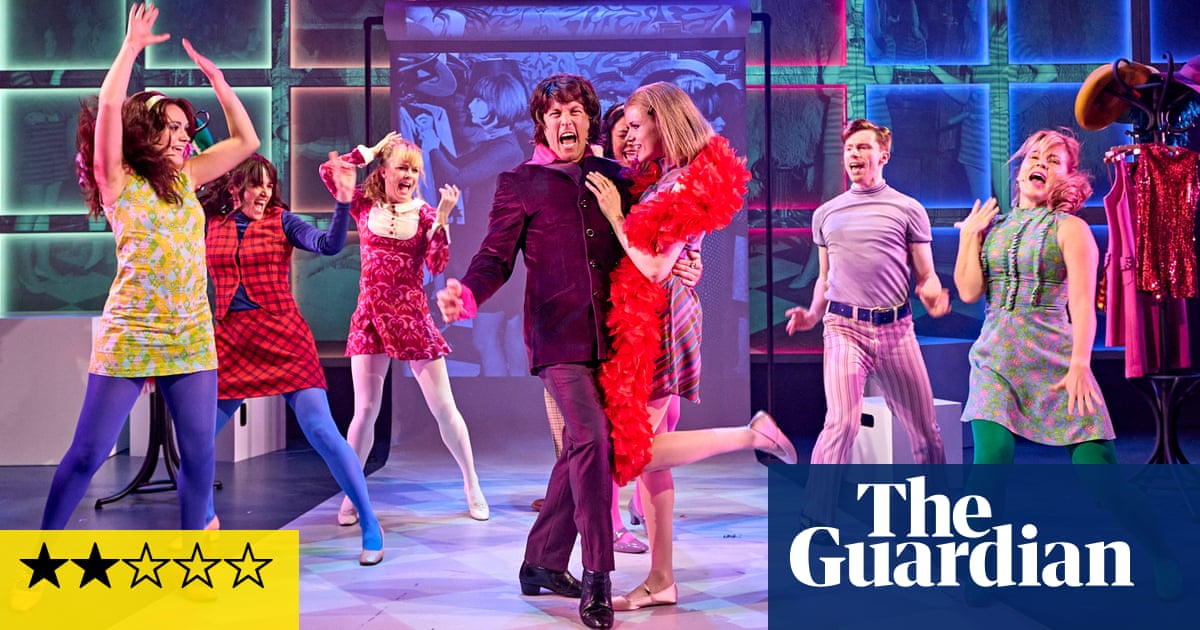
ent, the rock musical respectfully frozen in draft mode since the sudden and shocking death of its creator Jonathan Larson before its final off-Broadway dress rehearsal in 1996, has never really been allowed to grow up.
Its lyrics swing wildly between glorious and half-baked and the book frequently loses its focus. Like Hair and Jesus Christ Superstar before it, however, Rent endures in the grand tradition of rock musicals: its heart is bigger than its problems; its music moves under your skin and moves you.
This loose La Bohème adaptation about struggling artists who build and lose a found family over the course of a year in Manhattan’s East Village has always been scrappy and loose. In Shaun Rennie’s production for the Sydney Opera House, there’s still mess to the musical, but this time it’s infused with enough gravity and thoughtful adjustments that help Rent grow up just enough to soar.
Rennie made his directorial debut with Rent in 2015; he knows this production like it’s a part of him. That staging, which was a return-season sellout at the small but influential Hayes theatre, showed both his potential and revealed his inexperience, but it was electric: a new brilliant mind meeting a sometimes brilliant show.
Five years later, Rennie’s body of work has evolved to centre thoughtful and compassionate explorations of community, identity and connection through a queer lens. His works are tough questions phrased gently; his musicals dive deep into the inner lives of his characters but extend a hand back to the audience to welcome them in for the journey.
For Rent, this time around, it means being brave enough to let the characters be heard – giving them beats to find themselves, and therefore something new, within rock-influenced old operatic archetypes.
Luckily, Rennie has the cast to pull that off – you only need to look to Seasons of Love, the treacle-y but undeniably stratospheric ensemble standard that kicks off the second act. Here, Rennie stages the number that evolves organically – Roger (Robert Tripolino) plays his guitar, Mark (Mat Verevis) has a melodica. The ensemble’s Henry Brett adds to the movement with a stunningly clear whistle; Angelina Thomson dances; Mimi (Mia Morrissey) and Joanne (Elenoa Rokobaro) start to sing.
And then Benny (Tim Omaji), who in this production can’t quite bear to leave his friends behind in a way that feels redeemable, brings everyone together. He was once known as “Timomatic”, the home-town star of So You Think You Can Dance, and you better believe he breakdances (Luca Dinardo’s choreography is a small and consistent pleasure). By the time we settle into the traditional arrangement of the song, and ensemble member Marissa Saroca takes the vocal line that makes your heart expand, you can’t help but be in love with these artists and the community they’ve built together.
The magic here is simple: Rennie makes it all feel real.
The ensemble are deeply connected to the principal cast (when Mimi begs Roger to light her candle, they light and extinguish flames of their own) but time is made to honour their own talents and identities. And the principal cast is so alive. Monique Salle’s Maureen makes avant-garde comedy protest feel fresh and new, and we see her friends in the audience cheer her on – always, in this production, are friends supporting each other. Collins (Callum Francis) and Angel (Seann Miley Moore) let their love be playful and pure and infectious; Joanne, the lawyer who hates mess but loves Maureen, commands respect. Roger is depressed but never overwrought. Mark, the film-maker-narrator, doesn’t hover outside the action here – he lets down his hair and gets amongst it. He isn’t the centre of the world in this production. No one is. Everyone is.
New musical motifs open up the world and let joy in (mostly by incorporating more dance). Angel is addressed with they/them pronouns. Mimi is still sexy in a much more relaxed and less sexualised costume than she is usually given; Morrissey resists any attempts to simplify her. All the costumes, by Ella Butler, pay tribute to the soul of Rent while feeling far more chill. Dann Barber’s set solves the problem of the Drama theatre’s long letterbox stage by giving it height and dimension, constructing shape and angles on stripped back, scaffolded set.
The first act has its problems, though they are fixable and will, with luck, disappear as the show settles into itself. Musicals require harmony between not just the voices of the ensemble, but also the cast, band, and sound design. The performers spend the first act scrambling to catch up to musical director Andrew Worboys and his rambunctious band, and the sound (by David Bergman) falls over in execution – mic levels, sound cues, and first words in lines are missed or sacrificed to keep pace. It’s as though the music won’t let the characters take a moment to breathe, but Rennie’s direction is all about the entire worlds that rise and fall with the rhythm of our chests, and we need those moments. We want those moments.
In the second act, however, the production is untouchable. Its heart is here, in the death of bright star Angel, and the unravelling of a group that is only at its best together – and needs to be together to survive. This act, in this production, ensures that every character decision and interaction is propelled, as it should be – as it must be – by the overwhelm of grief. It’s heartbreaking. It’s electrifying. It’s the best that Rent can be. If this production can find that heart and regain its musical footing in the first act, it’ll be unstoppable. As it stands now, you’ll still weep into your mask.
• Rent continues until 31 January at the Sydney Opera House. Masks are mandatory and the bar is closed at interval












